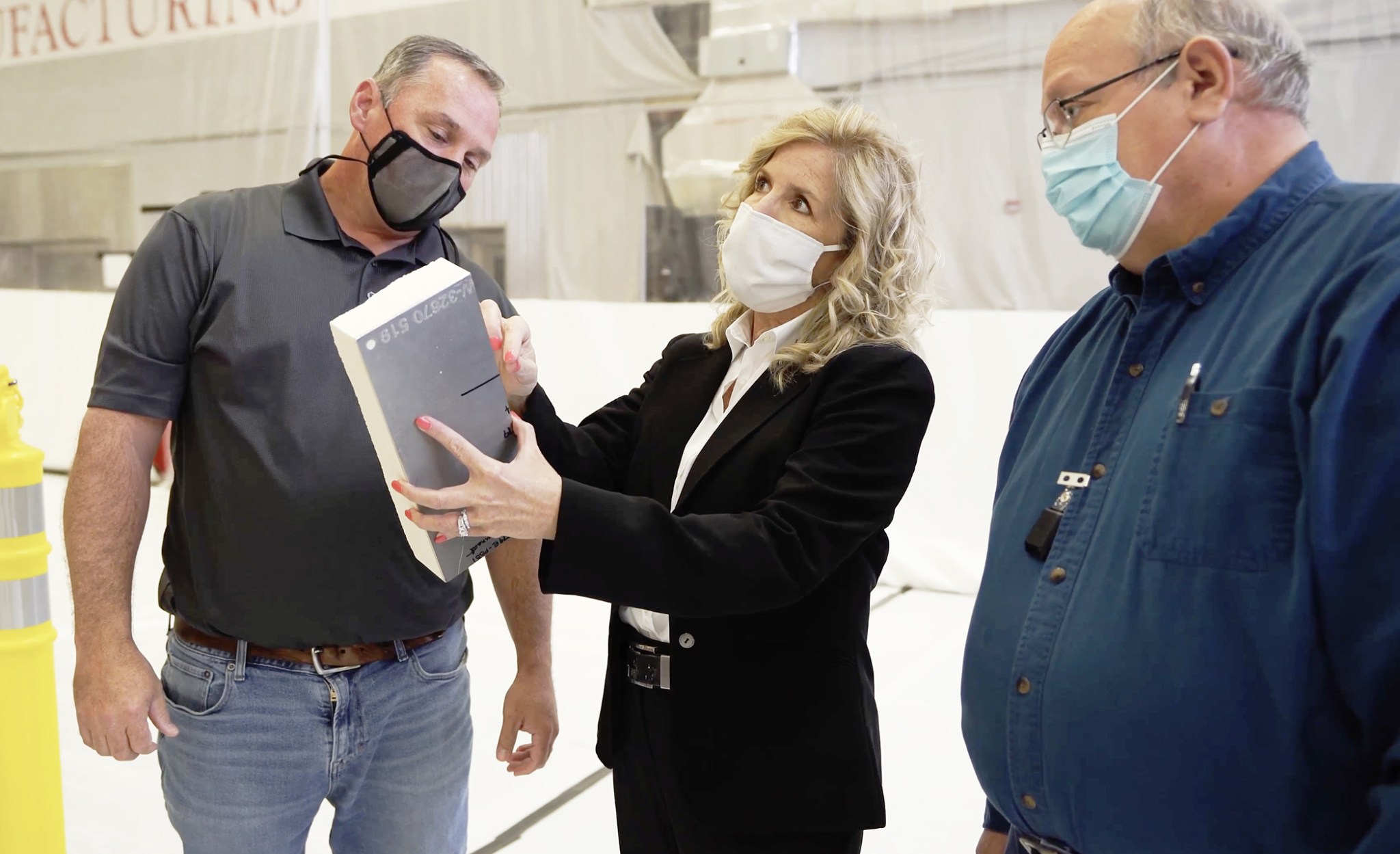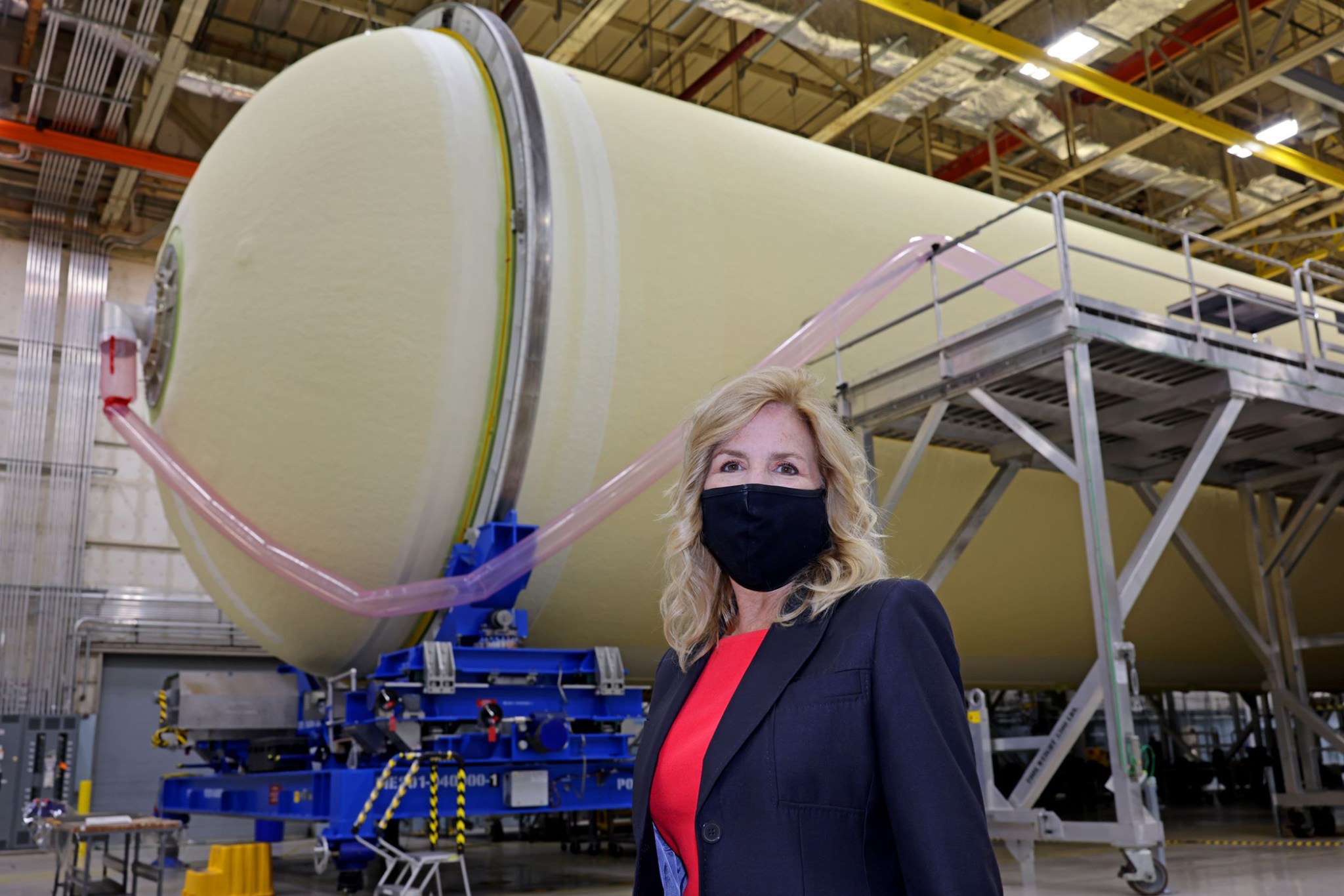By Gina Hannah
Career inspiration can come from many places. For Space Launch System (SLS) Program Associate Manager Dr. Sharon Cobb, it was her father’s work at a foundry in Birmingham, Alabama.

During a family employee event, Cobb saw molten steel being poured into molds to form large ingots, large metal blocks that would later be made into usable structures, and she was hooked.
“I was just fascinated and in awe,” Cobb says. “The thing that was most exciting to me was watching them pouring these vast amounts of red-hot metal into the molds and watching that process of it cooling and the crackling of the skin as it cooled. Watching them pour that ingot and then forming it into a usable shape — that was fascinating to me — that you could transform materials into something different based on how you process them.”
That fascination with how raw materials can be transformed into things that make our lives better has led Cobb to a 35-year career with NASA that has ranged from pioneering projects in a materials lab at NASA’s Marshall Space Flight Center in Huntsville, Alabama to teaching a materials science class to astronauts before they conducted experiments on the International Space Station.
Today, as associate program manager for the SLS Program, Cobb oversees design, manufacture, testing and assembly of the world’s most powerful and most capable rocket, NASA’s Space Launch System that will return astronauts to the Moon for the first time since the Apollo Program. High-energy SLS launches can also send robotic spacecraft deep into the solar system faster than any rocket in existence today.
Cobb says her career trajectory would likely have been very different without that exposure to her father’s work and, as well as encouragement that came from him and from teachers in school.
“My guidance counselor always told me, ‘If you like math and science, you should consider engineering.’ At the time I didn’t even know what engineering was!” she says. During her senior year of high school, she had the opportunity to visit the materials department at the University of Alabama at Birmingham (UAB), where she saw demonstrations on how different materials were processed.

“It was almost like magic. You could completely change a material’s properties just by the way you processed it from liquid to solid. I had always been curious about how things worked and this sparked my interest. I really wanted to know why and how you could do that,” Cobb said.
Cobb earned bachelor’s and master’s degrees from UAB, and a doctorate in materials science and engineering from the University of Florida. She also continued learning from her father. “I would come home from school and we would talk about some of the things I’d learned, and he would tell me some of the things that were going on at the plant and the reports that he got to write. We enjoyed having lots of technical discussions about my classes and how it related to his work in the foundry.”
During graduate school, Cobb had her first opportunity to work for NASA, assisting one of her advisers who had taken a summer faculty position. “We were working on a flight experiment that would fly on the space shuttle. The idea that we could process materials without gravity was a really exciting concept,” Cobb said. She joined the agency full-time in 1986 as a research scientist, conducting pioneering studies on the effects of reduced-gravity processing on a variety of complex semiconductor materials.
Her NASA career spans work both in and out of the lab, including a stint at NASA Headquarters in Washington, D. C. as a program executive for a team studying how materials might be mined from the Moon and used to build parts via additive manufacturing that would be needed on a mission. One of the projects Cobb led as a senior scientist was the Materials Science Research Rack-1 on the International Space Station, which is still in use today for in-space materials experiments.
“It’s really exciting to see those experiments that we planned so many years ago being implemented on the space station. One of the things I got to do in the lab was learn about building flight hardware that would then be used in space to process these materials,” Cobb says. “That has led throughout my career to my interest in building flight hardware that enables things to be done in space. Those materials I thought were magic so many years ago are an important part of building flight hardware and are key to making it possible for us to safely transport humans and equipment into space to do things we’ve only dreamed were possible.”
Cobb is now part of the team building a new generation of hardware that will enable the next era of space exploration. The Artemis program will expand humanity’s presence beyond Earth, starting with a sustainable lunar presence and enabling the next giant leap: sending humans to Mars.
For more information on SLS, visit https://www.nasa.gov/exploration/systems/sls/index.html



























